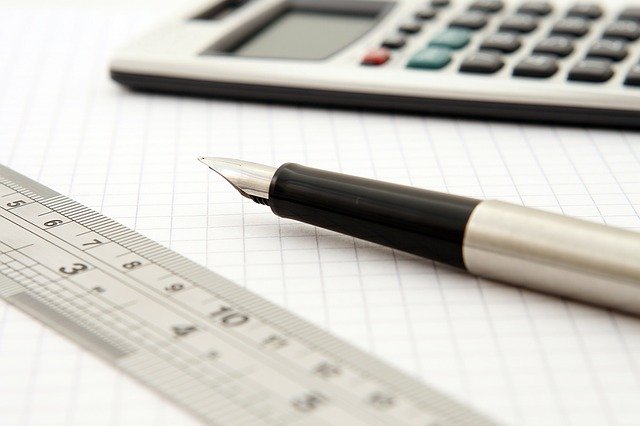How Can We Calculate Sig Fig Values During Math Class?

A scientist can only attain a certain degree of accuracy when measuring anything, restricted either by the instruments used or by their physical nature. The clearest instance is range measurement.
Consider how the range of an item passed by tape (in metric units) is being measured. The tape measurement is probably divided into the lowest millimeters. Therefore, you can’t measure more than a millimeter in accuracy. Therefore, if the object moves 57,215,493 mm, we are sure that it moved 57 mm (or, depending on the preference for that situation, 57.7 cm or 0,057 m).
This rounding amount is usually OK in such kinds of examples. It would truly be a quite remarkable accomplishment to have the exact motion of a normal item to a millimeter. Imagine measuring a car’s motion up to a millimeter, and you’ll see that this isn’t usually essential. If such accuracy is required you will use instruments which are far more advanced than a tape measure.
In measurement, the number having an important effect in value is called the number of sig figs. In the previous instance, the 57-millimeter response would provide our metric with 2 sig figs.
If you are calculating sig fig values during math’s class, you must follow certain rules to ensure that your sums, differences, products, and quotients honestly reflect the precision in the initial measurements. But how we can calculate sig fig values during math’s class that precision and accuracy of significant figures remain intact?
By taking things one calculation at a time, following a few simple rules, you can calculate sig fig values precisely during math’s class. Addition and subtractions shall be subject to one law and multiplication and division shall be subject to another.
Addition and Subtraction Laws
Round the sum or minus (resultant answers) to the same number of decimal places as the smallest decimal places of the measurements. It’s best to round up like that because you admit that your answer can not be more accurate than the least accurate measure.
Multiplication and Division Laws
Round the multiplication or the quotient so that the value with the least sig figs is the same amount of sig figs as the least accurate measurements.
Notice that the two laws differ. When you add or subtract, you attribute the number of decimal places in every initial sample to significant figures in the response.
When you multiply or perform division significant figures from your initial measuring collection, you place them in the response depending on the lowest amount of significant figures.
Calculating Sig Figs during Math’s Class
Scientific figs provide several mathematical guidelines that differ from what your math’s classes introduce. The important thing with sig figs is to make sure that the exactness of the calculation is the same. You hold all your numbers out of the results in mathematics, while you often operate with the significant figures in scientific research.
It is only the last digit (the farthest to the right) that counts when adding or removing scientific data. For instance, we have three distinct distances added:
5.324 + 6.8459834 + 3.1
There are four sig figs for the first value of this addition example, and eight for the second value and only two for the final one. The accuracy of the decimal point is in this event as the smallest. So you will calculate but the result will be 15.3 in place of 15.2699834 because you will be rounded to the 10th(first after the decimal), because while your two values are more accurate, the third is not more than the tenth, so the problem can be so precise.
Note that there are three significant figures for your resultant answer in this situation, while neither of your value has been 3 sig figs. For beginners, this can be very awkward, and this adding and subtracting characteristic must be taken into account.
On the other side, the amount of sig fig matters when multiplying or having a division in scientific data. Multiplying significant figures will always lead to a solution that is the same as the smallest figures in the question. To give you an example,
5.638 x 3.1
There are four sig figs in the first variable and two important numbers in the second. Therefore, your answer will end with two sig figs. It is 17 instead of 17.4778 in this situation. You then calculate the right amount of meaningful numbers around your alternative. The increased accuracy of the propagation will not spoil the calculation you just don’t want to offer your final solution a fake amount of precision.
Scientific Notations during Math’s Class
Mathematicians use scientific notations to manipulate these figures readily. The sig figs are mentioned by increasing into the 10th needed power. The speed of light is as follows:
2,997925x 108 m / s
Writing seven sig figs is a lot easier than writing 299,792,500 m / s.
Depending on the scenario, the addition of scientific notation may be very simple or very difficult. If the terms are in the same order (i.e. 4 3005x 105 and 13.5x 105), follow the additional rules discussed earlier, keep the maximum value in your place of rounding and maintain the same magnitude as in the example below:
4.3005 x 105 + 13.5 x 105 = 17.8 x 105
However, if the magnitude order is different, you must work a little to achieve the same magnitudes as in the example that shows where one term is 105 and the other one is 106:
4.8 x 105 + 9.2 x 106 = 4.8 x 105 + 92 x 105 = 97 x 105
or
4.8 x 105 + 9.2 x 106 = 0.48 x 106 + 9.2 x 106 = 9.7 x 106
Both of these methods are the same, which gives the response 9,700,000.
Also, very tiny figures are often jotted down in scientific notations but the magnitude is negative, rather than positive, as a result.
Nobody likes to write out in long forms, so our fellow is scientific notation. All the above rules are identical, regardless of the positive or negative nature of the exponent.
Accuracy of Sig Figs
Sig figs are a fundamental means by which mathematicians can provide the numbers they use with a measure of accuracy. The rounding method still involves a mistaken measurement in the figures, but other statistical methods are used in high-level calculations. However, the proper use of significant figures will be adequate to keep the necessary amount of accuracy in nearly all of math’s’ classes in high-school and college.
Conclusion
Sig figs can be a major stumbling block when they are first presented to learners in maths because they modify some of the basic math laws learned for years.
Similarly, it may also create problems if scientific notation is introduced to students who cannot be fully satisfied with exponents or exponential laws. Keep in mind that these are basics that all students of science need to know at some stage and, the guidelines are very fundamental.
The main problem for students is to remember entirely which rule is applied at that time. When should I add and subtract exponents? When can the decimal point be moved to the top and the left? These are the questions which arise most of the time in their mind. They will get better at it until it becomes second nature if they continue to practice these problems.
Lastly, it can be difficult to maintain adequate units. You cannot add cm and meters directly, but you must first convert them to the same scale. This is a prevalent error for beginners, but like the remainder it can be solved very readily by slowing down, taking care of and thinking about what you are doing.
Would you like to receive similar articles by email?





